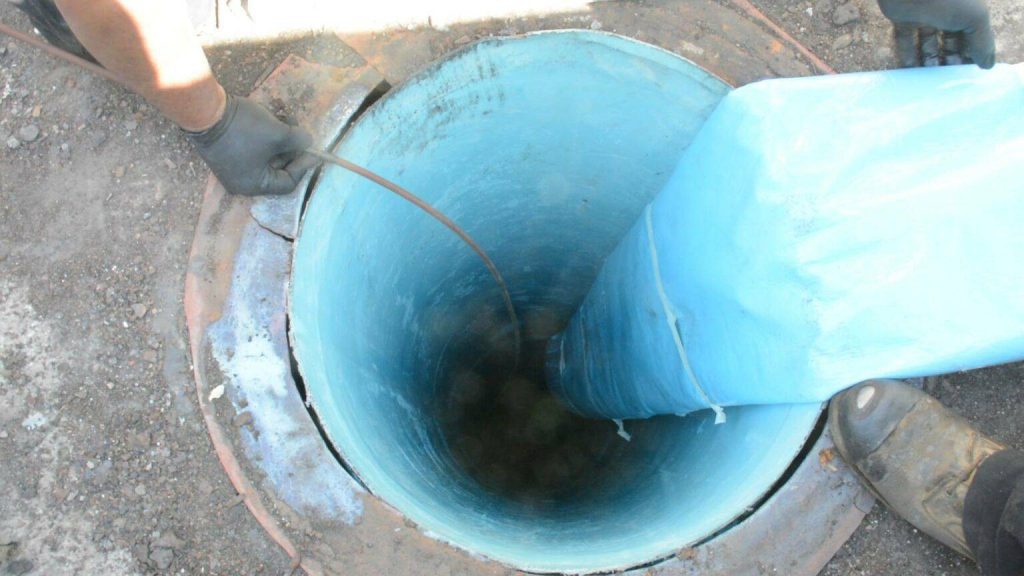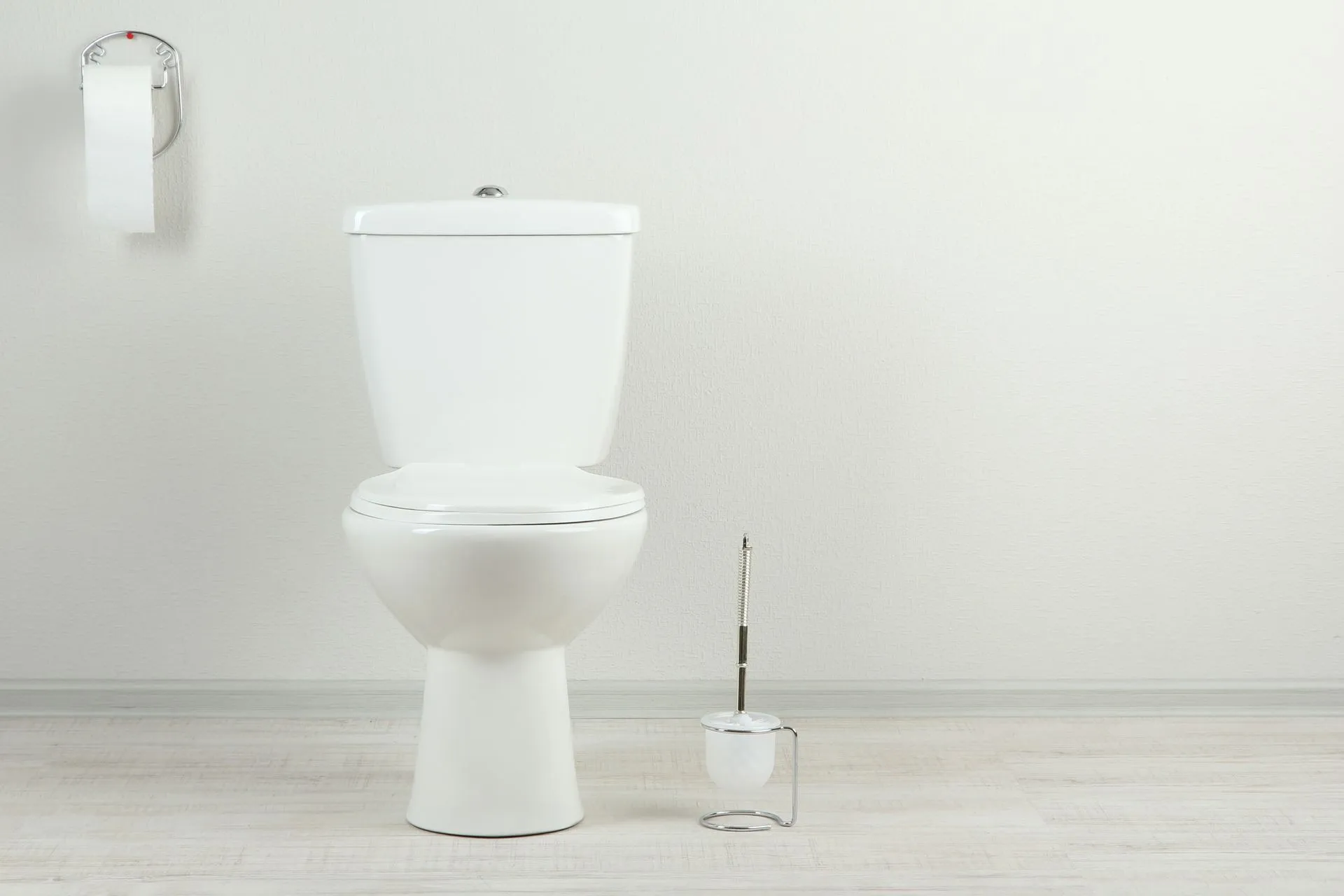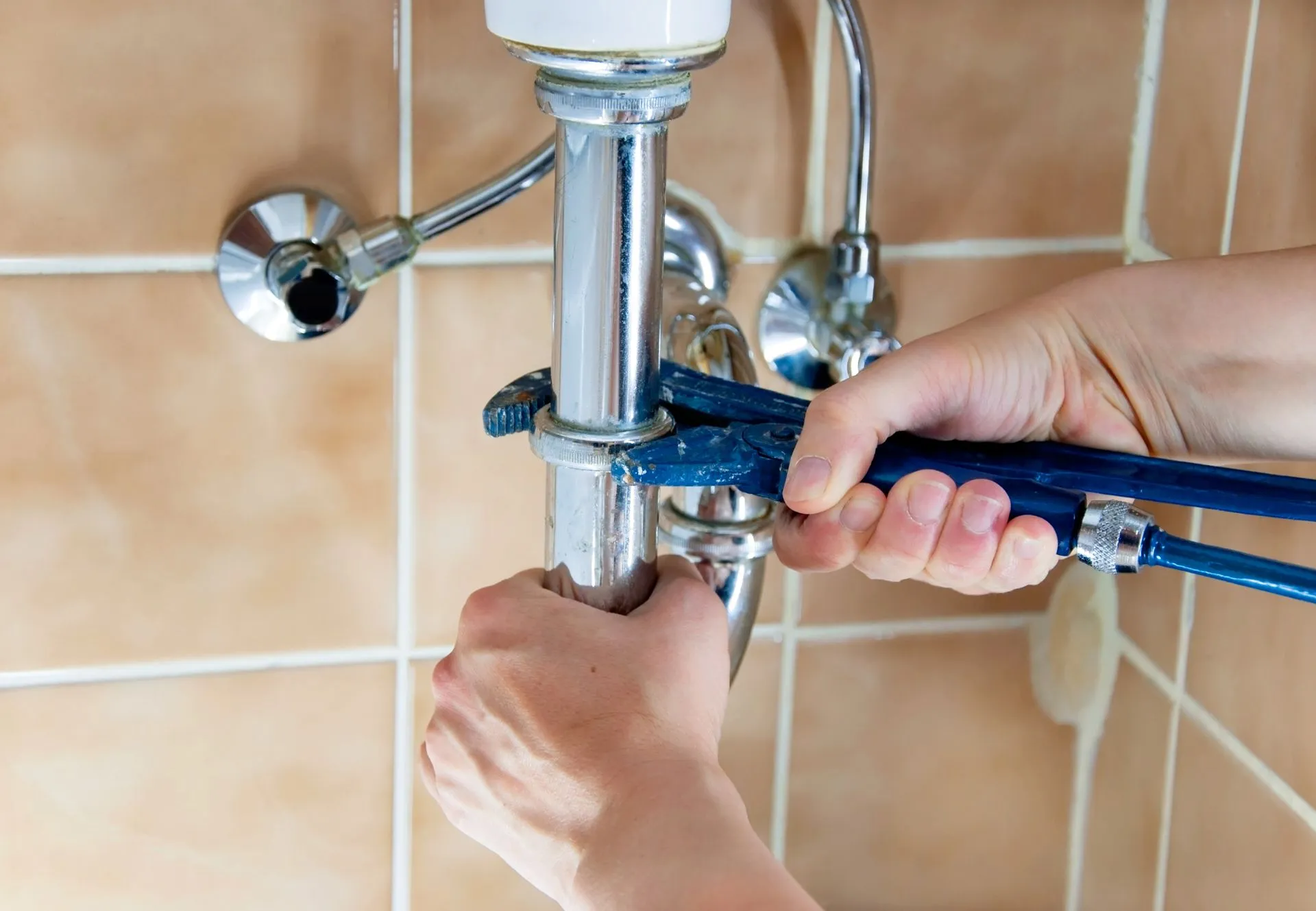Cast Iron Pipes plumbing maintenance is a growing issue as cast iron pipes age and deteriorate. Repairing cast iron sewer pipes presents a significant decision point: the traditional method of conventionally replacing Cast Iron Pipes and the innovative approach of Cured In Place Pipe Lining (CIPP). Each strategy offers distinct advantages and considerations, spanning from the initial investment and installation time to the expected durability and operational downtime. This article meticulously contrasts these two prevalent methods, shedding light on their respective features and benefits. Whether grappling with extensive damage or seeking a minimally disruptive solution, understanding the comparative longevity, cost-effectiveness, and application suitability of these repair techniques is crucial. Our exploration aims to equip you with the insights necessary to navigate this complex decision, ensuring a choice that aligns with both immediate requirements and long-term property maintenance goals. This article is a great resource for HOA boards and Property managers dealing with condos or large developments.
What is Cast Iron Pipe Replacement?
Cast Iron Pipe Replacement is a comprehensive method that entails completely replacing old, deteriorated cast iron sewer pipes with new PVC or equivalent piping material. This process involves excavating the area around the damaged pipes to allow for the physical removal of the compromised sections. Following the extraction of old pipes, new pipes, either of PVC or alternative materials, are installed. Known for its long-term reliability, this traditional approach can fully rectify severe damage, ensuring the sewer system’s integrity with a lifespan of up to 100 years. However, it’s important to note the invasive nature of this method, which requires significant excavation work that can disrupt the property. This necessitates additional restoration efforts post-replacement, marking a considerable drawback in terms of time and cost.
Specific Scenarios Where Cast Iron Pipe Replacement is the Only Viable Option:
- Collapsed Sewer Lines: In cases where the sewer pipe system has completely collapsed, leaving no structural integrity for CIPP to adhere to, cast iron pipe replacement becomes the only solution to restore functionality.
- Compliance with New Codes: When existing sewer systems must be upgraded to meet new environmental or building codes, complete replacement with modern materials like PVC may be mandated, making cast iron pipe replacement necessary.
Benefits of Cast Iron Pipe Replacement
The benefits of opting for replacing your Cast Iron Pipe are significant, primarily centered around its longevity and reliability. One of the most compelling advantages is the durability of new installations, which can last up to 100 years. This extended lifespan not only provides a long-term solution for sewer systems but also offers substantial peace of mind by minimizing the frequency of future repairs. Despite the higher upfront costs and the process being time-consuming due to excavation and restoration requirements, the long-term benefits of replacing your cast iron pipes with PVC underscore its value as a robust, dependable solution for addressing severe pipe damage.
Longevity: Lasts up to 100 years
The longevity of replacing Cast Iron Pipes with PVC stands out as a major benefit. With new installations potentially lasting up to 100 years, this method provides a long-term solution for sewer system maintenance. This durability significantly diminishes the necessity for frequent repairs, making it a sustainable choice for plumbing infrastructure.
Drawbacks of Cast Iron Pipe Replacement
While the longevity and reliability of Cast Iron Pipe Replacement are undeniable, it’s essential to consider its drawbacks. The most significant disadvantage is the cost associated with this method. It is significantly higher than alternatives like Cured In Place Pipe Lining (CIPP), encompassing not just the materials but also the extensive labor and time required for excavation and property restoration. Furthermore, the process is notably time-consuming, leading to considerable downtime for the property. This can be especially disruptive for residential areas or businesses that rely on continuous sewer system functionality. These factors position Cast Iron Pipe Replacement as a challenging option for those with limited budgets or in scenarios where minimizing disruption is a critical concern.
Cost: Significantly higher than CIPP
The cost associated with Cast Iron Pipe Replacement stands out as a considerable drawback, being significantly higher than the alternative, Cured In Place Pipe Lining (CIPP). This increased financial burden encompasses not just the materials but also the labor and time required for excavation and the subsequent restoration of the property, making it a less attractive option for those with budget constraints.
Real-World Cost Examples:
- Average Cost Range: The cost of conventionally replacing Cast Iron Pipe can range from $15,000 to $25,000 for residential properties, depending on the length of pipe replaced and the complexity of the excavation.
- Case Study: A recent project involving the replacement of 50 feet of sewer line under a landscaped yard had a total cost of $12,000, which included excavation, pipe replacement, and landscape restoration.
Time-consuming: Requires excavation and property restoration
Moreover, the time-consuming aspect of Cast Iron Pipe Replacement cannot be overlooked. The necessity for extensive excavation not only extends the project timeline but also demands property restoration efforts once the replacement is complete. This process can significantly disrupt the daily operations of both residential and commercial properties, presenting a challenge for those seeking a swift and minimally invasive solution.
Real-World Time Examples:
- Average Project Duration: The duration for conventionally replacing cast iron pipe projects can range from 2 to 4 weeks, and it is heavily influenced by the extent of excavation and restoration required.
- Case Study: A commercial project to replace 100 feet of sewer line, including excavation and parking lot restoration, was completed in 3 weeks. This timeline accounted for the excavation process, pipe installation, and the comprehensive restoration of the affected area.
What is Cured In Place Pipe Lining (CIPP)?
Cured In Place Pipe Lining (CIPP) represents a trenchless repair technology that offers a streamlined approach to mending damaged sewer pipes with minimal excavation. This innovative method involves the insertion of an epoxy-saturated felt liner into the compromised pipe. The bladder inside the epoxy-saturated liner is then inflated and starts to cure in place, effectively creating a new, durable pipe within the old structure. The appeal of CIPP lies in its less intrusive nature, which eliminates the need for extensive digging, thus preserving the property’s landscape and existing infrastructure. Ideal for addressing moderate damage, CIPP stands out for its efficiency, providing a quick and effective solution that minimizes both downtime and disruption. CIPP delivers a durable repair option, extending the lifespan of sewer systems at a considerably lower initial cost.

Technological Advancements in CIPP:
Over the years, technological advancements have significantly improved the effectiveness and reliability of the CIPP method. Innovations include:
- UV Curing Technology: Utilizes ultraviolet light to cure the resin, significantly reducing curing time and enhancing the strength of the repair.
- Robotic Cutting and Inspection: Advanced robotics are used for precise cutting of the liner openings and thorough inspection of the liner post-installation, ensuring optimal alignment and integrity.
These advancements have made CIPP a highly reliable and efficient method for sewer pipe repair, capable of addressing a wide range of damage scenarios with minimal environmental impact and disruption.
Ideal for addressing moderate damage, CIPP stands out for its efficiency, providing a quick and effective solution that minimizes both downtime and disruption. CIPP lining delivers a durable repair option, extending the lifespan of sewer systems at a considerably lower initial cost.
All our Locations can Help With Pipe Lining Your Cast Iron Pipes
128 Sarasota Center Blvd
Sarasota, FL 34240
Phone: 800-652-7604
15510 Rockfield Blvd, Suite 100 C
Irvine, CA 92618
Phone: 800-652-7604
196 16th Ave NE
Naples, FL 34120
Phone: 800-652-7604
1388 NW 65th Terr
Plantation, FL 33313
Phone: 800-652-7604
14476 Duval Pl W
Jacksonville, FL 32218
Phone: 800-652-7604
25029 S. Vermont Ave.
Harbor City, CA 90710
Phone: 800-652-7604
Benefits of Cured-In-Place Pipe Lining
Cured In Place Pipe Lining (CIPP) brings forth a range of benefits that address the core needs of efficient and minimal impact sewer repairs. Its less intrusive nature stands out, eliminating the need for extensive excavation and thereby preserving the property’s landscape and structural integrity. This approach not only saves on restoration costs but also significantly reduces environmental impact.
Moreover, CIPP is quicker to implement compared to traditional replacement methods. Repairs can often be completed within hours or days, greatly reducing downtime, and minimizing disruption to daily operations. This swift turnaround is particularly beneficial for commercial properties and busy residential areas where time is of the essence.
Another advantage is the cost-effectiveness of CIPP. While it offers a durable solution that extends the life of sewer systems, the initial costs are generally lower than those associated with complete pipe replacement. This makes CIPP an attractive option for property owners seeking a balance between quality, efficiency, and affordability.
Less intrusive: No need for extensive digging
A hallmark of Cured In Place Pipe Lining (CIPP) is its less intrusive nature. This innovative method sidesteps the need for extensive digging, effectively preserving the aesthetic and structural integrity of the property. By circumventing major excavation, CIPP not only proves to be environmentally friendly but also significantly reduces disruption to daily life, making it a go-to solution for maintaining property aesthetics and functionality.
Quicker to implement: Completed in hours or days
Furthermore, the quickness of CIPP implementation is a notable advantage. Distinct from the lengthy processes associated with traditional methods, CIPP repairs are completed swiftly—often within hours or days. This expedited approach drastically cuts down on downtime, ensuring property operations can resume with minimal delay. The efficiency of CIPP is especially beneficial in urgent situations, offering a timely and effective solution to sewer system issues.
Drawbacks of Cured-In-Place Pipe Lining
Despite the appealing benefits, Cured In Place Pipe Lining (CIPP) presents certain drawbacks that warrant consideration. CIPP might not be the ideal solution for pipes that have sustained severe damage or are structurally compromised. In such scenarios, the effectiveness of the lining could be jeopardized, potentially leading to the need for more extensive repairs in the future. These considerations highlight the importance of a thorough evaluation of the sewer system’s condition and the extent of damage, ensuring that CIPP is indeed the most appropriate and effective repair method for the situation at hand.
Limitations: Not suitable for pipes with severe damage
Additionally, CIPP encounters limitations in its application, especially with pipes that have sustained severe damage. Structural integrity is a prerequisite for effective CIPP lining, as the method relies on the existing pipe framework to support the resin-saturated liner. In cases where the pipe is severely fractured, collapsed, or misaligned, CIPP may not provide a viable solution. For instance, a study conducted on a municipal sewer system revealed that approximately 15% of severely damaged pipes were unsuitable for CIPP, necessitating full replacement to ensure system integrity and functionality.
Cost Comparison
A lot of home owners and property managers ask what are the cost of repairing Cast Iron Pipes? The cost can vary. When evaluating the financial aspects of repairing cast iron sewer pipes, it’s essential to consider both the initial and long-term costs associated with Cast Iron Pipe Replacement and Cured In Place Pipe Lining (CIPP). Below is a detailed cost-benefit analysis table that breaks down the costs associated with each method, including labor, materials, and potential long-term savings or expenses.
| Cost Factor | Cast Iron Pipe Replacement | Cured In Place Pipe Lining (CIPP) | Notes |
| Materials | High | Moderate | Cast iron or PVC pipes vs. epoxy-saturated felt liner |
| Labor | High | Moderate | Extensive excavation and restoration vs. minimal excavation |
| Excavation | High | Low | Required for pipe replacement vs. not required for CIPP |
| Property Restoration | High | Low | Often necessary post-replacement vs. minimal to no restoration needed with CIPP |
| Installation Time | Longer | Shorter | Weeks to months vs. hours to days |
| Operational Downtime | Longer | Shorter | Significant impact on property use vs. minimal impact |
| Initial Cost | Higher | Lower | Due to labor, materials, and restoration costs vs. lower due to trenchless technology |
| Long-term Savings | Potential | Moderate | Longer lifespan and durability may reduce future costs vs. potential future re-lining |
| Longevity & Durability | Up to 100 years | Varies, generally less | Superior durability with replacement vs. effective yet shorter lifespan with CIPP |
| Environmental Impact | Higher | Lower | More waste and landscape disruption vs. environmentally friendly |
This comparative analysis underscores the importance of weighing both immediate and future expenses to select a repair method that aligns with one’s financial planning and long-term property maintenance objectives. While Cast Iron Pipe Replacement involves a higher upfront cost, its durability and extended lifespan may offer greater cost-efficiency over time, particularly in cases of severe structural damage. Conversely, CIPP provides a cost-effective and quick solution for moderate damage, with lower initial costs and reduced property disruption, making it an attractive option for those prioritizing immediate repair needs and budget constraints.
Time Required for Each Method
The time required to complete sewer pipe repairs using Conventional Replacement and Cured In Place Pipe Lining (CIPP) varies significantly due to the nature of each method. Below is a detailed table that outlines average timelines for each method based on real project data, providing a clearer understanding of what to expect in terms of project duration.
| Project Phase | Cast Iron Pipe Replacement | Cured In Place Pipe Lining (CIPP) | Notes |
| Initial Assessment | 1-2 days | 1-2 days | Time to evaluate the damage and plan the repair process is similar for both methods. |
| Preparation | 2-3 days | 1 day | Includes setting up the site for excavation or preparing the liner and equipment for CIPP. |
| Execution | 5-14 days | 1-2 days | Actual time to replace or line the pipes. Cast Iron Replacement requires more time due to excavation. |
| Property Restoration | 3-7 days | 0-1 day | Time to restore the property post-repair. CIPP often requires little to no restoration. |
| Total Project Duration | 11-26 days | 3-6 days | Overall, Cast Iron Pipe Replacement takes significantly longer due to the excavation and restoration phases. |
Case Examples
- Cast Iron Pipe Replacement: A residential project involving the replacement of 50 feet of sewer line under a landscaped yard required 18 days to complete. This included 4 days of excavation, 10 days for pipe replacement, and 4 days for property restoration.
- Cured In Place Pipe Lining (CIPP): A commercial project to line 100 feet of sewer pipe in a busy urban area was completed in 1 days, with minimal disruption to the business operations. The process included 1 day for preparation, 1 days for cleaning, and 2 days for lining and curing.
Suitability for Different Situations
Choosing between Cast Iron Pipe Replacement and Cured In Place Pipe Lining (CIPP) hinges on the specific suitability for various repair scenarios. Cast Iron Pipe Replacement stands out as the preferred option in instances of severe damage, where the structural integrity of the sewer system is significantly compromised. This method offers a thorough solution, ensuring long-term reliability and performance, albeit with greater financial and time investments.
Conversely, CIPP shines in situations characterized by moderate damage or when minimizing operational disruption is paramount. Thanks to its trenchless approach, CIPP is especially advantageous for properties with restricted access or those necessitating a swift repair process. The ability to quickly restore sewer functionality with minimal excavation makes CIPP an attractive option for many.
In essence, a detailed assessment and camera inspection of the damage and the specific needs and constraints of the property is essential. This enables a tailored approach to sewer repair, ensuring that the chosen method not only addresses the immediate issue but also aligns with long-term maintenance and operational goals.
Extent of damage: Replacement for severe, CIPP for moderate
The extent of damage critically influences the choice between repair methods. For instances of severe damage, where the sewer system’s structural integrity is significantly compromised, conventionally replacing your Cast Iron Pipes is the advisable route. This method provides a comprehensive remedy, ensuring durability and longevity. On the other hand, Cured In Place Pipe Lining (CIPP) is well-suited for situations of moderate damage. It offers a streamlined and efficient solution, mitigating issues without necessitating widespread excavation.
Frequently Asked Questions (FAQs)
What are the primary differences between cast iron pipe replacement and cured-in-place pipe lining?
Cast iron pipe replacement involves physically removing the damaged pipe and installing a new one. Cured-in-place pipe lining, however, repairs the pipe by inserting an epoxy-coated liner that hardens, effectively creating a new pipe within the old one.
How do the costs of cast iron pipe replacement compare to cured-in-place pipe lining?
Cast iron pipe replacement typically incurs higher costs due to the extensive labor and materials required. Cured-in-place pipe lining offers a more cost-effective solution by minimizing excavation and labor expenses.
How does the durability of the repaired or replaced pipe compare between the two methods?
Cured-in-place pipe lining typically extends the life of the existing pipe by several decades, offering a durable solution. Cast iron pipe replacement provides a brand-new pipe, potentially offering a longer lifespan, depending on the material used.
What are the timeframes for completing repairs or replacements using these methods?
Cast iron pipe replacement can take several days to weeks, depending on the project’s complexity. Cured-in-place pipe lining usually requires less time, often completed within a day, as it avoids extensive excavation.



